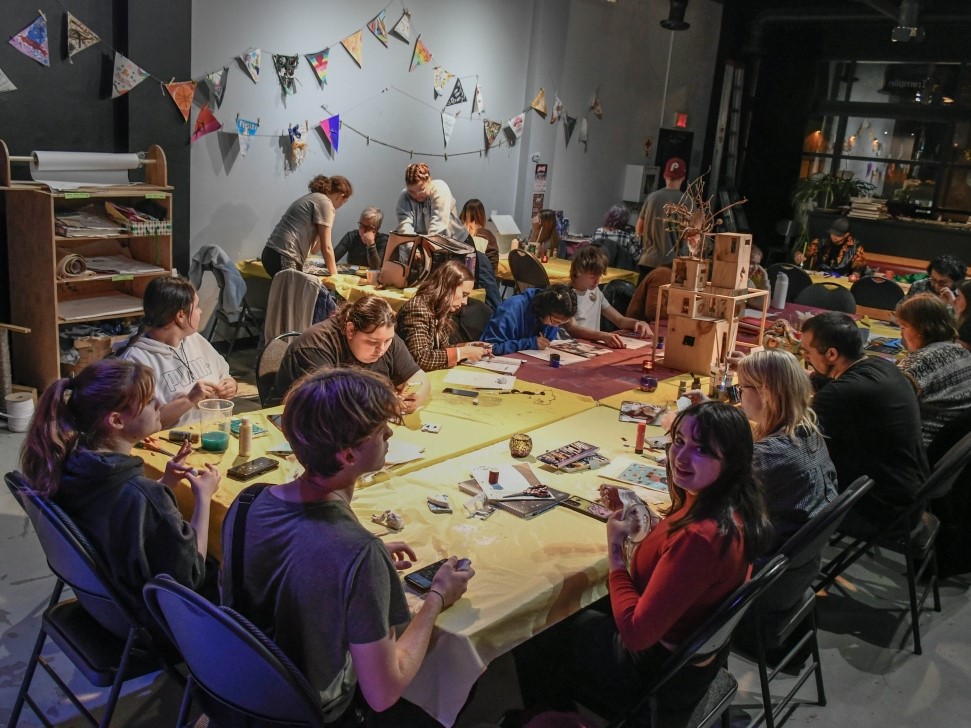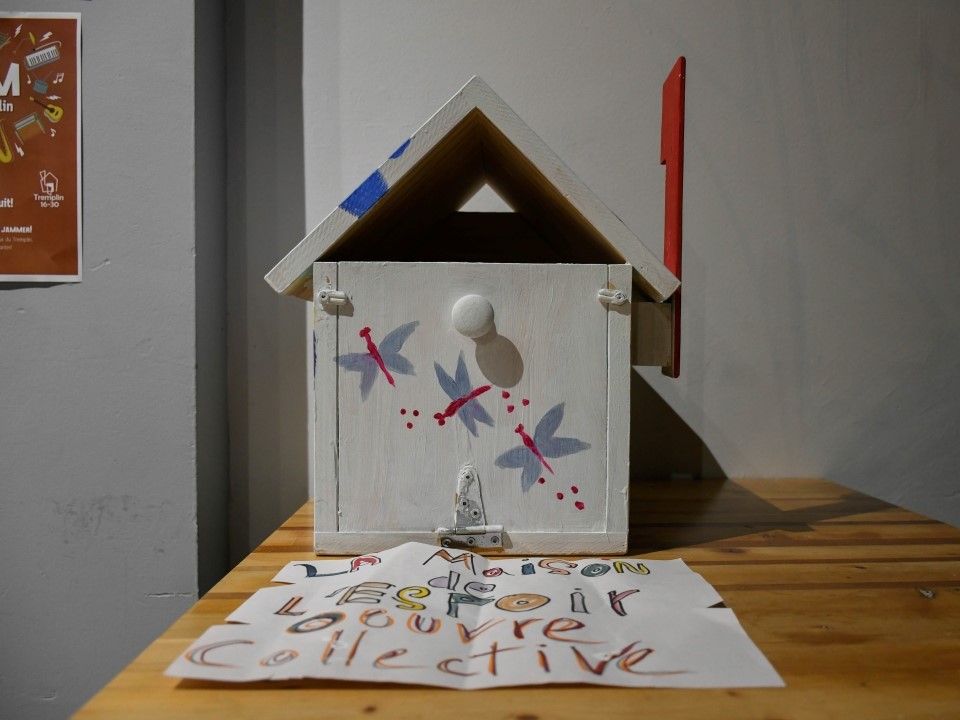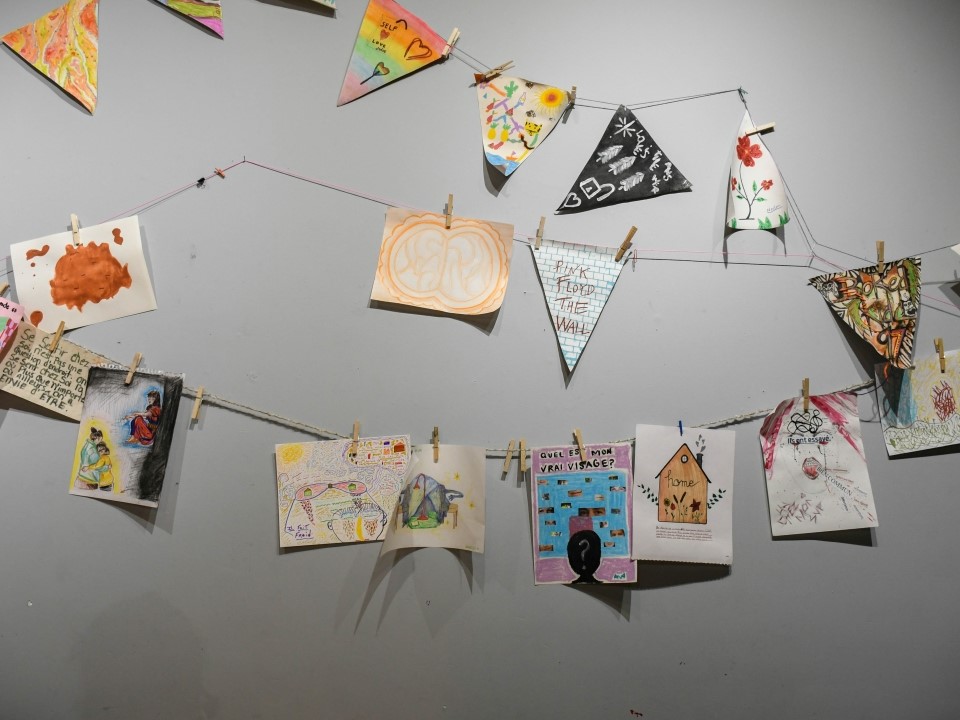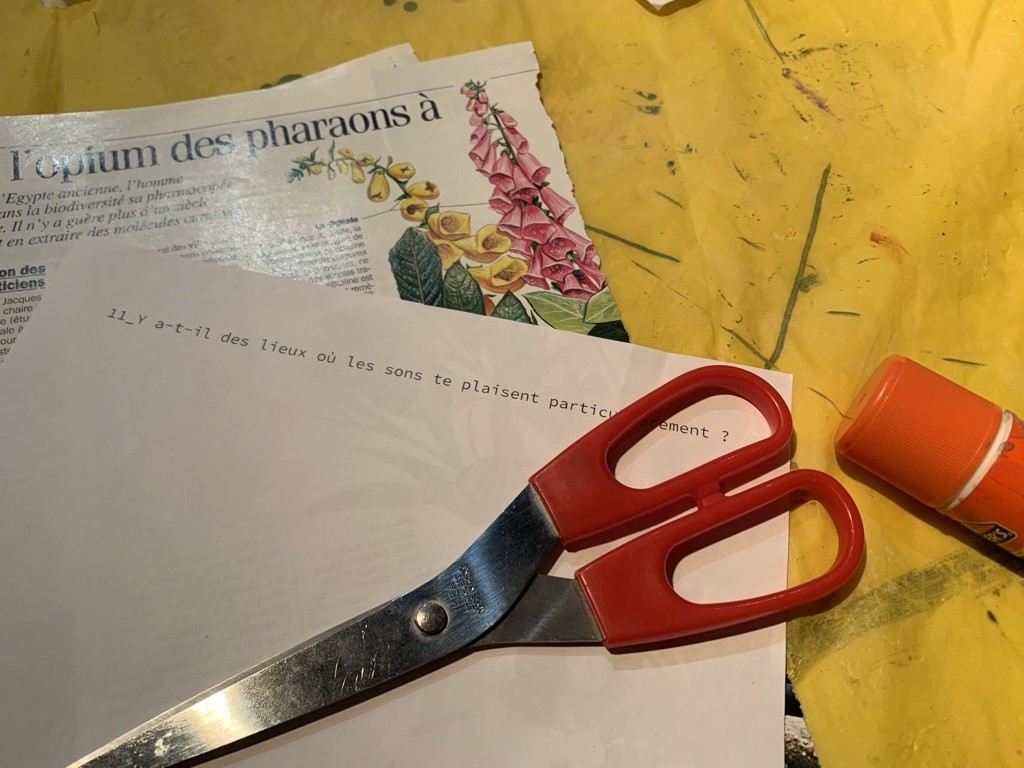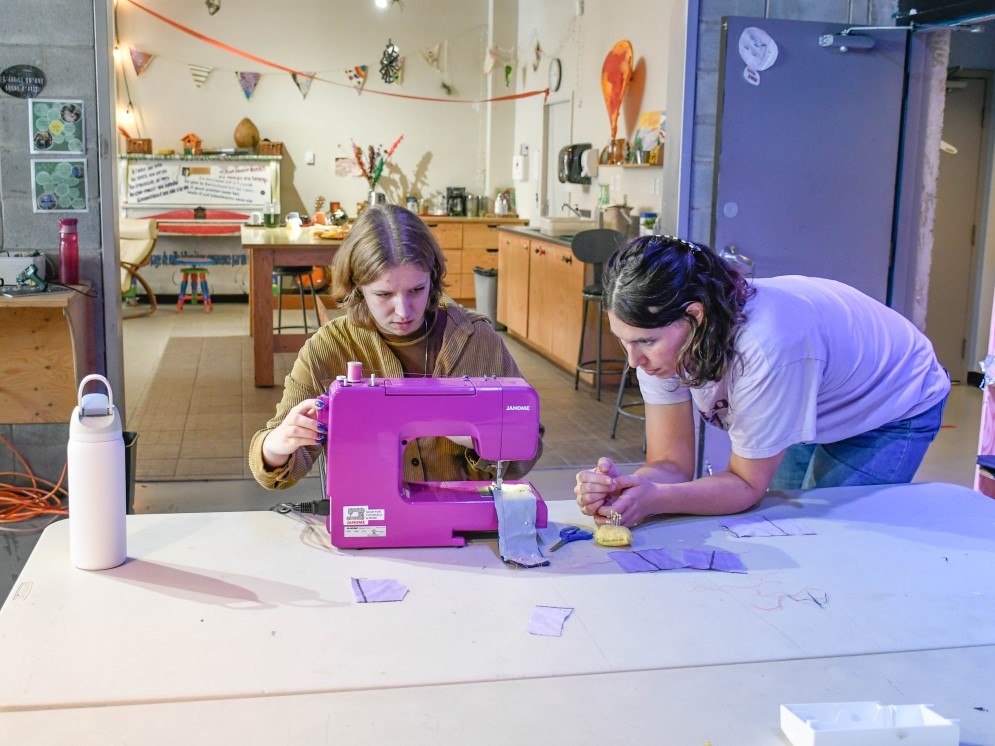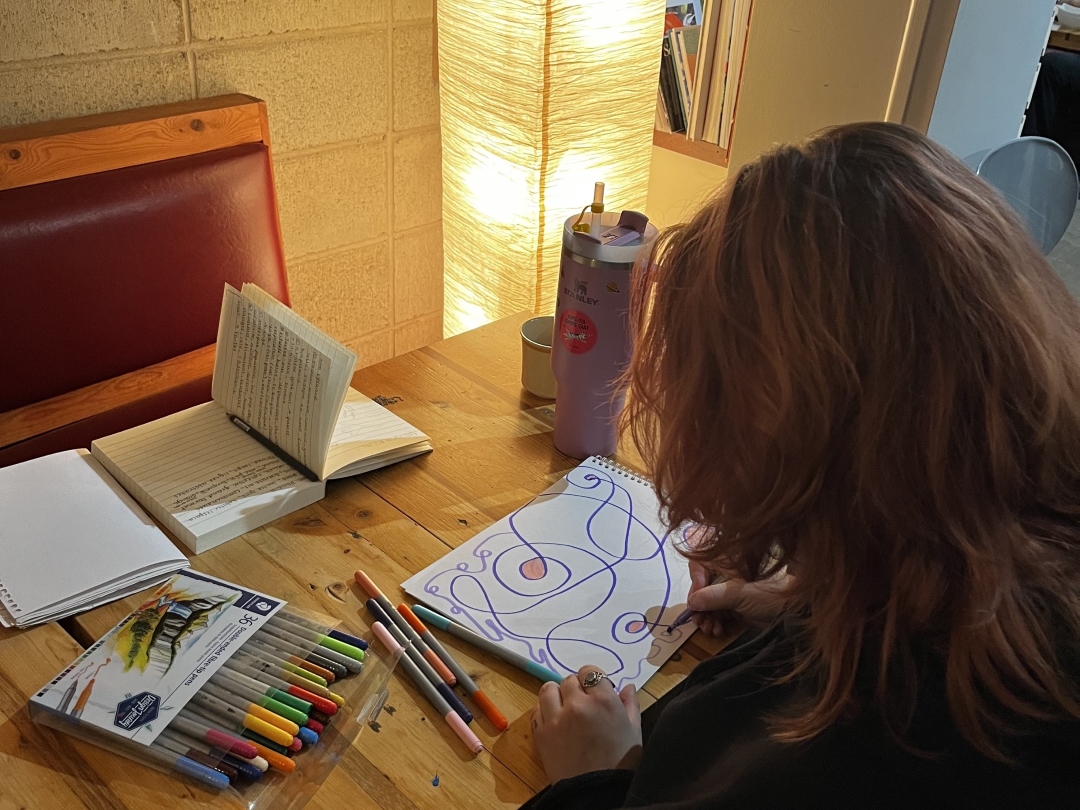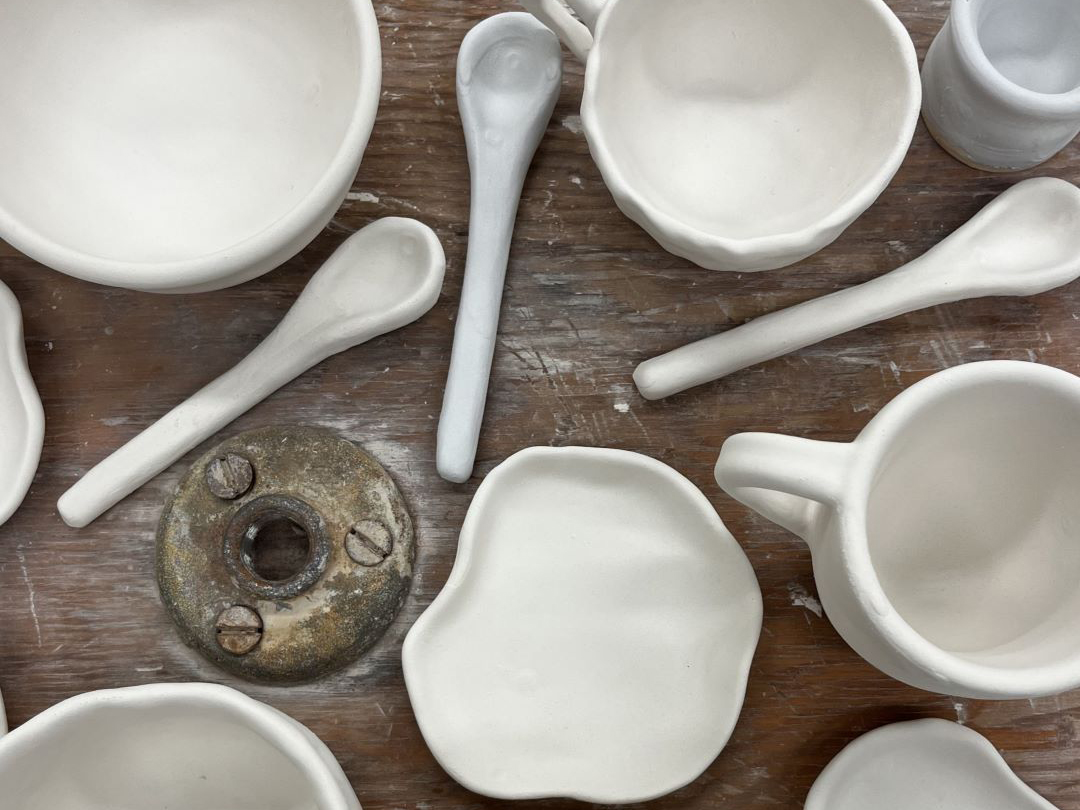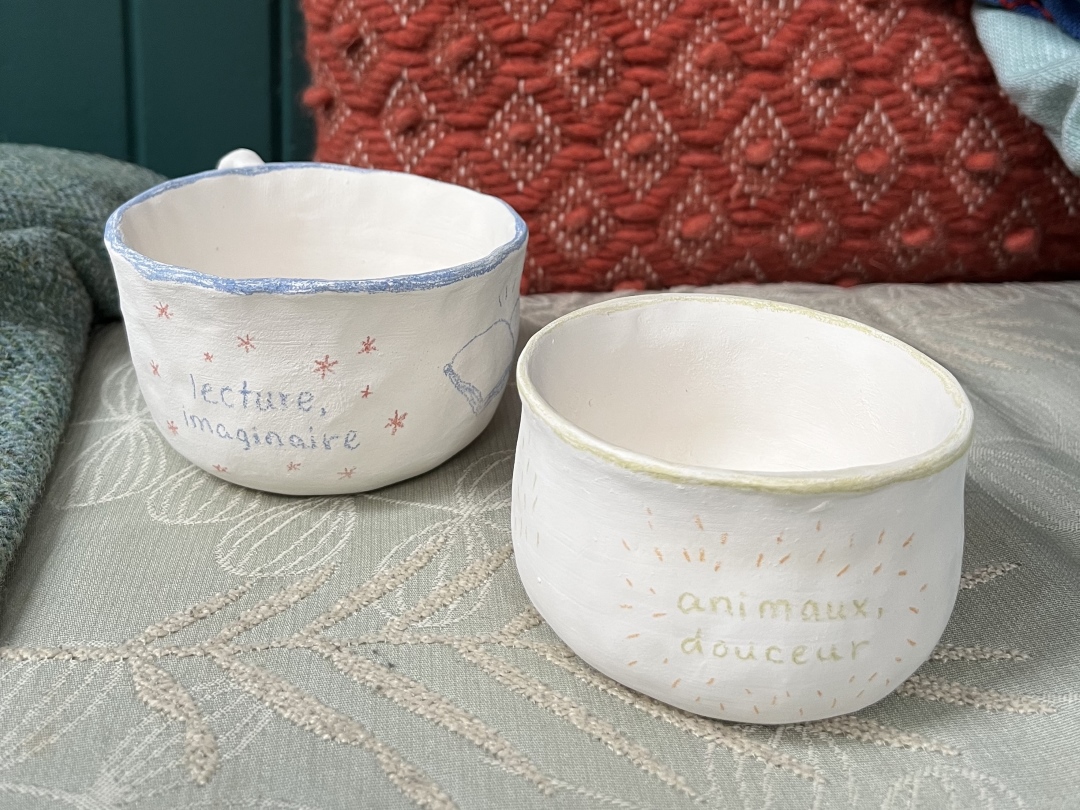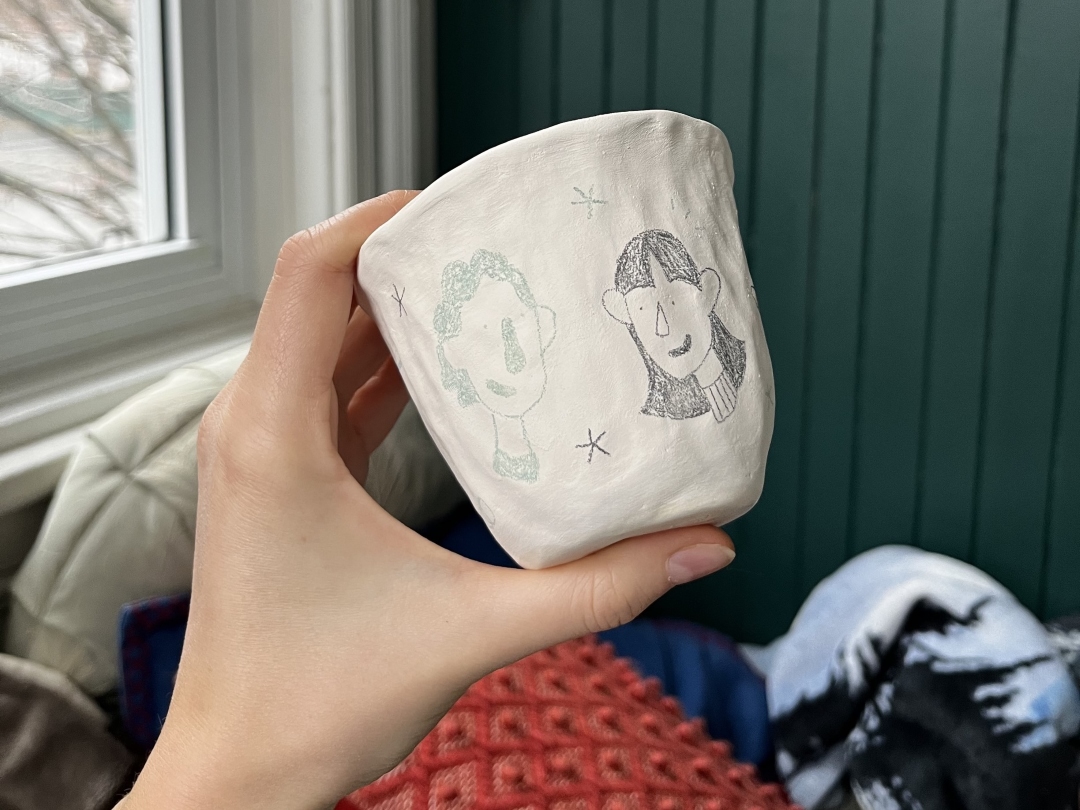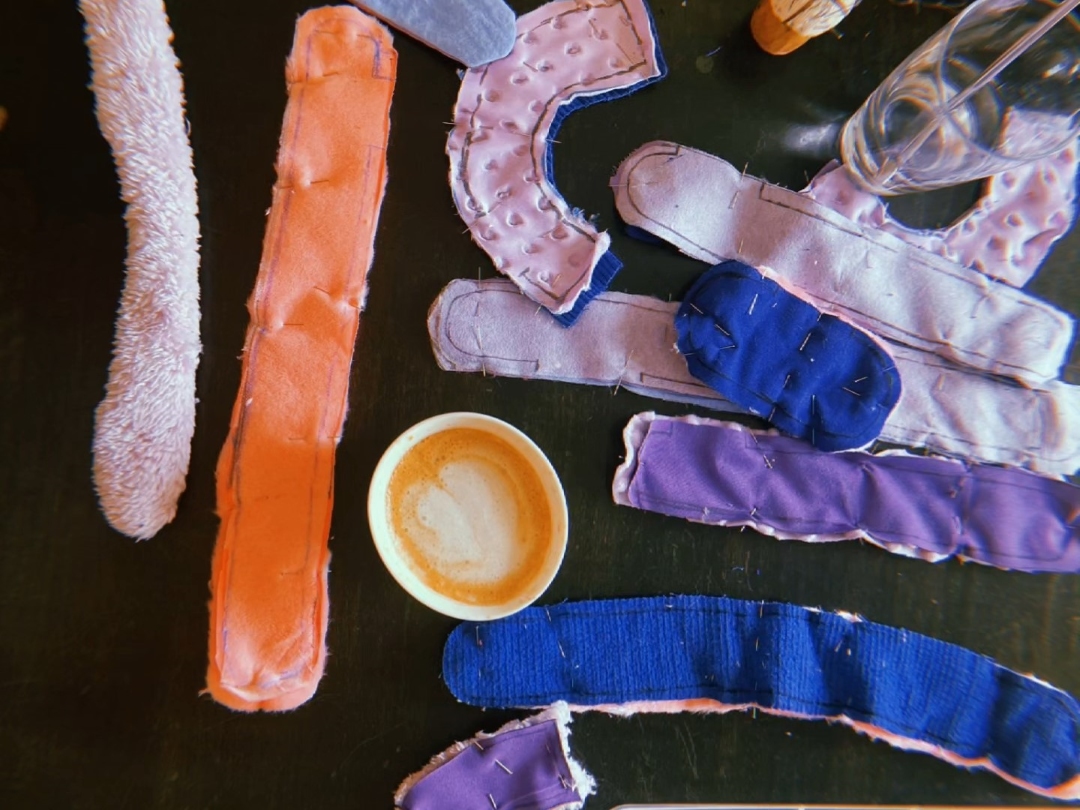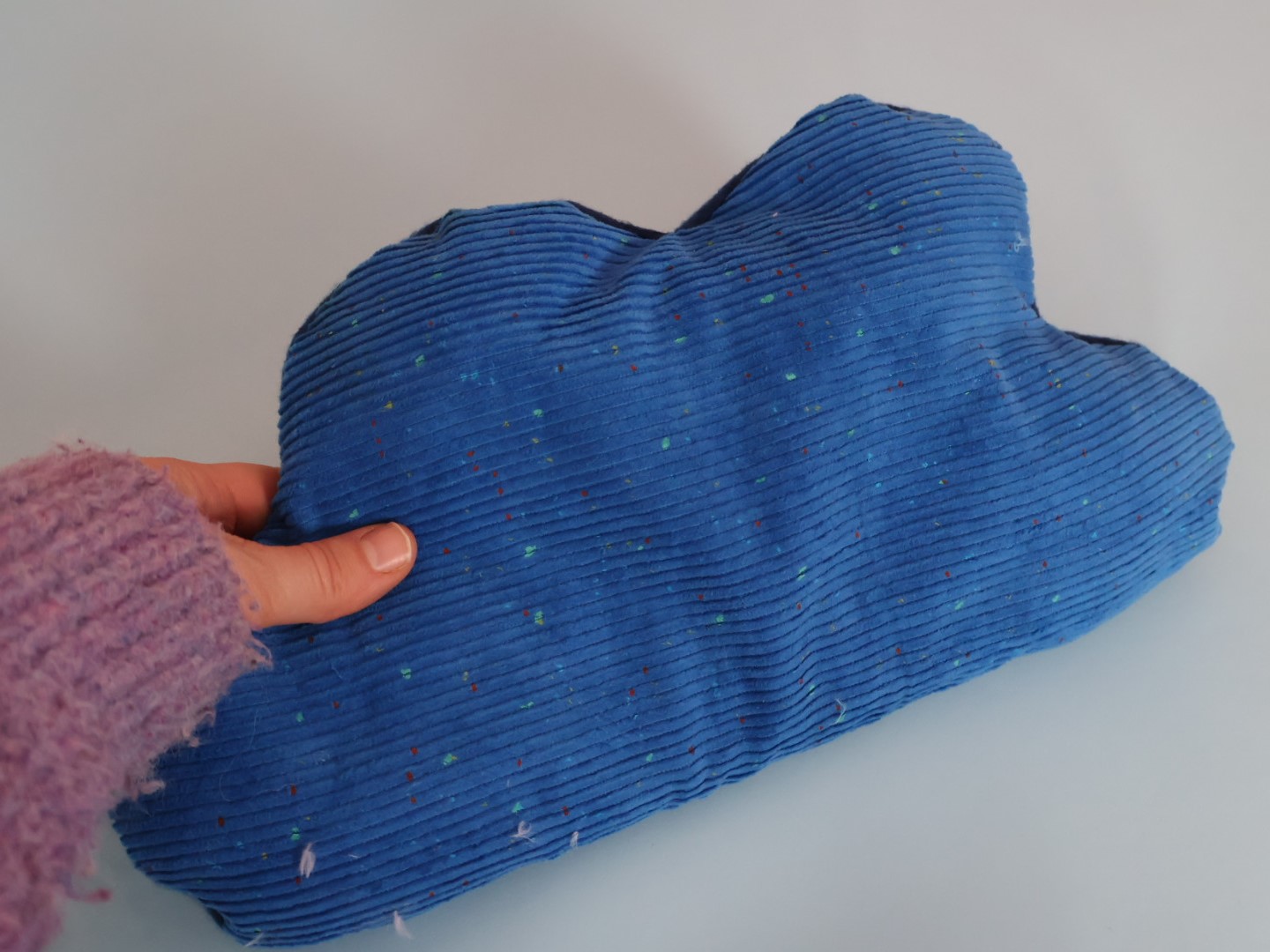Camila Vásquez –
November, 2024
It’s good to enter such a gentle atmosphere, deep in the darkness of a November evening. By the time I arrive, the Tremplin 16-30 art hive has already been underway for some time, and it feels as if we’ve stepped into a parallel space-time, diametrically opposed to that of the street. As usual, the welcome is warm, the connections sincere and straightforward, and you quickly feel ready to drop off. But this time, there’s something particularly calm and inward about the place, which resonates with the time of year.
Since mid-autumn, I’ve been keeping up correspondence with members of the Tremplin team and artists in residence. Through images or in writing, they keep me up to date not only on the progress of the projects, but also on what’s happening during the art hives. This season, the artists dive more deeply into their research and creations, and, thanks to their creative energy, draw participants into their respective artistic worlds. As early as the beginning of autumn, when the heat was still on and we were still harvesting what the summer had brought, the artists had expressed their desire to venture deeper into their creative processes. Lysanne Picard, who learned to sew over the season and acquired a sewing machine with a view to creating sensory toys, brought her machine to the Art Hive on several occasions. She works on the choice of fabrics, shares moments of touching textile materials with others, asks questions in writing and thus tests preferences to make prototypes. Anabelle Brochu spends time in one-on-one meetings talking tarot, discussing what makes people feel good, and drawing, all which feed into her residency project. From the data she gathers, she creates pottery pieces according to different categories that encourage well-being, such as “animals-softness” or “reading-imaginary”, on which she draws.
I observe the familiarity with which all these regulars disperse into the Tremplin’s two large rooms and engage in their creative activities. There’s such a fluidity to their movements that it’s easy to see how the art hive is a safe space where everyone is focused on their task, but also permeable to others. Ni un, ni deux. Mixité · marges · joie is the title given to this residency with the aim of creating a container conducive to the exploration of social art, and it seems to me that this was embodied in that evening. No one could distinguish the artists among this heterogeneous group who form a tightly woven community around art. This reflects the gradual integration of the artists into the community, and the support they have received from the staff at the weekly art hives and monthly community dinners.
“Not all art hives are this quiet,” facilitators tell me. In fact, at the one dedicated to Nuit des sans-abris, held in October, the atmosphere was rather ebullient. Participants were invited to express themselves artistically on the theme of home. Many mentioned family, comfort, familiar objects, a place where solitude can be experienced, or a state of internal stability. These concerns are at the heart of Anabelle and Lysanne’s artistic approach and underpin their current research.
Images
1 – 3 La nuit des san-abris Art-Hive. Photo: Tremplin 16-30
4. Lysanne Picard’s research as part of Ni un, ni deux residency. Question asked to art hive’s participants. Photo: ArtLab
5. Lysanne Picard’s research as part of Ni un, ni deux residency. Sewing session with an art hive participant. Photo: Tremplin 16-30
6. Anabelle Brochu’s research as part of Ni un, ni deux residency. Drawing session with an art hive participant. Photo: Anabelle Brochu
7 -9. Anabelle Brochu’s research as part of Ni un, ni deux residency. Pieces of pottery made by the artist. Photo: Anabelle Brochu
10-12 Lysanne Picard’s research as part of Ni un, ni deux residency. Sensory toys and materials created by the artist. Lysanne Picard

